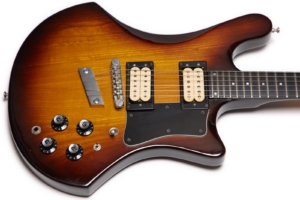
Read along while I regale you with everything I know about these great guitars including why it still may just be everything I need in a guitar along with the reason for me now owning a fifth sixth seventh copy.
I may have a problem.
Introduction
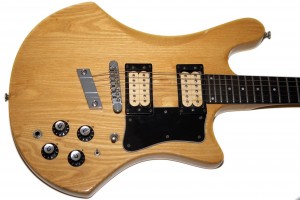
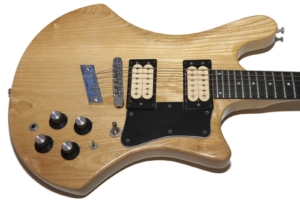
The S300 and corresponding B301 bass were the first of the New Generation of Solid Bodies by Guild, and they produced instruments in this shape for probably 4-5 years or so, expanding the line to the S60, S65D, S70, and others after the first year. The later S275s and such have different shapes to them and are not of the same series. These guitars also do not have a name associated with the model number like many other Guilds.
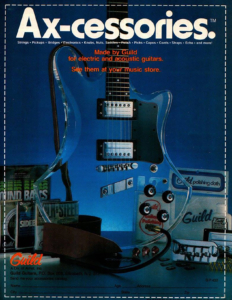
And I still want that Lucite S300 from the ad.
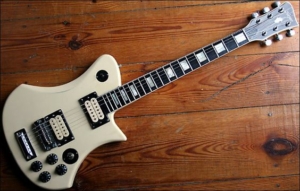
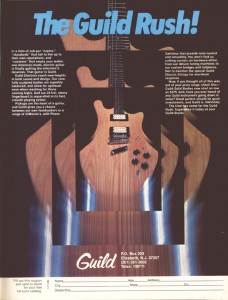
The S300AD was pretty much the flagship electric guitar for Guild in the late ’70s and early ’80s and ads of the time described it as the best-selling guitar that Guild had ever made. I don’t have the ability to validate that statement but given the popularity of the Guild S-100 and various Bluesbirds that were made for periods spanning decades, I have my suspicions that this may be marketing hyperbole. Regardless, they are fantastic guitars as anyone who has owned one will likely tell you.
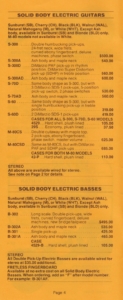
Vintage examples of the S300AD in use can be hard to come by, which is likely why the guitar and its oddly shaped brethren never became more popular, however a commenter on my Guild S300 review mentioned the inside of the Queen Jazz album, so I found my copy and did some looking which lead to a wonderful surprise!
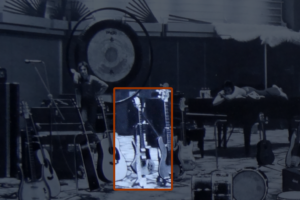

Speaking of Kim Thayil’s blonde S300AD, I just about had a heart attack when I first saw this picture because at first glance I thought he might have my old guitar that I sold in one of the most foolish decisions of my entire life.
Allow me to pine for a lost love.
A Brief Lament
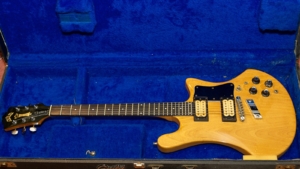
That guitar was serial number 205109 and it was the first thing that I’d ever bought with my own money at the age of 16 after working summer jobs in high school. It was my only guitar for 25 years and I lament its sale almost daily some 15 years after making the foolish mistake of selling it. I bought it at Mike’s Music in Stirling, NJ which you can read about briefly in my 2000 Guild Starfire IV review. I can remember the guitar hanging on the wall before I bought it, and I can remember every detail of the transaction. Sadly, Mike Tor (the owner) is no longer with us.
I serenaded girls with this guitar, played countless gigs with this guitar, won talent shows with this guitar, and learned how to play serious music on this guitar. The wear you see on the pickup bobbins in the photos is 100% from me since I was the original owner. I played it so much I had to have the frets redone, and they were redone by Mike’s Music. This guitar was a part of my life in a way that few other things were. It was the guitar that made me love Guilds, and it’s the guitar that started a love for the instrument and the brand that would one day cause me to write all of these reviews.
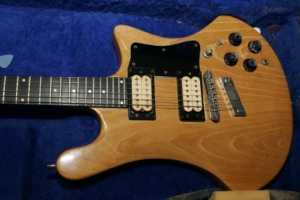
I actually called the guy a couple of years after the sale asking to buy the guitar back, but he said, “no”, offering to help me buy another. I don’t need another; I’ve got plenty. I want mine back.
In my never-ending quest to collect and review Guilds, I am forever on the lookout for this guitar but it has never shown up for sale. Please, if you have this guitar, contact me so I can get it back. I’ll happily trade you for a better one. Maybe two. I’m happy to to pay too much for it or otherwise lose money on the deal. I don’t care; I just want it back.
Finish
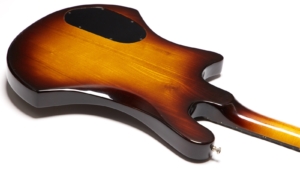
The finish itself is usually quite well done and I’ve never played one that felt tacky. I have seen more than one with subtle finish blemishes where the fretboard meets the top, but those have never affected play and I’ve never seen the issue spread. My original S-300A-D had such a blemish which is why I tend to notice it on others.
The ash-bodied S300s have beautiful grain and I think most of them I see are finished in blonde so that the nice grain can shine through. The sunburst models are more uncommon but still manage to show off that great grain, and though I may be biased from having such a beautiful example, I daresay that the sunburst model is more beautiful than the blonde. That’s saying something, too, because I *loved* my blonde S300AD!
Fretboard and Neck
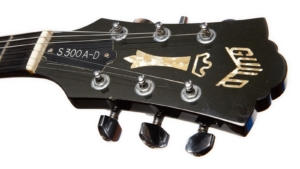
six seven, now) and while I generally dislike this smaller nut size, the necks tend to be deep enough to make playing them enjoyable. The necks are not huge, but they’re not pencils, either.
To give some clarity to what I mean by this, I once bought a 1973 Starfire and absolutely hated the neck, only to discover that the neck width was identical to my beloved 1979 S300AD: 1 5/8″ at the nut. After some measuring, I came to the conclusion that my problem with the neck was the depth, and what really blew me away was the fact that my S300AD was .84″ at the nut while the Starfire was .79″ at the same spot. That difference of 5/100th of an inch or 1.27mm made all the difference in the world to me. What’s even crazier is that my old S300AD was apparently on the small side, at least going by the limited data set of the three I’ve measured.
The necks on the two S300ADs currently in my possession are almost .9″ deep, though they’re still on the narrow side at just a touch over 1 5/8″.
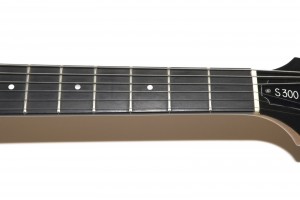
On the S300AD I owned for 20 years I never once had to adjust the truss rod, and thinking back I’ve never had to adjust the truss rod on any S300 I’ve owned. Hell, I think i’ve adjusted maybe two Guilds in all the years (decades) I’ve been playing them, and as memory serves those guitars had one-piece necks.
Build Quality
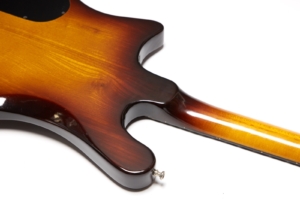
The bodies on these guitars are pretty simple aside from the shape in that they are a slab of ash where the S300’s body is a slab of mahogany. On some of the guitars the body is made of two pieces of ash glued together while on others its three. I’m sure it’s possible that there are one or four-piece bodies out there but I’ve never personally seen them.
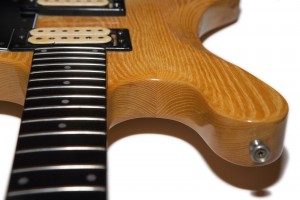
As I’ve mentioned this in my article about my S300, the seams where the pieces of body wood were joined are often all but invisible. My original S300AD was a two-piece body, as is my current sunburst version, but the picture to the right shows one of my previous S300ADs focusing on the seam between body planks which is at the base of the cutaway. Having seen some ugly wood matching in my time (even on some very expensive custom shop guitars), I think these wood joints are just masterful given the way the seam almost disappears.
The two S300ADs that are currently in my possession are almost identical in weight with the blonde one weighing 8 lbs 4 oz (3.74 kilos) and the sunburst example weighing essentially the same at 8 lbs 3.9oz (3.739 kilos). There is no binding to be found anywhere on these guitars, and as much as I love binding on a guitar (especially on the neck), the understated elegance of these guitar speaks for itself without any additional bling. Sure, I’m biased towards this model so you’re welcome to your differing opinion, even if it’s wrong.
Pickups
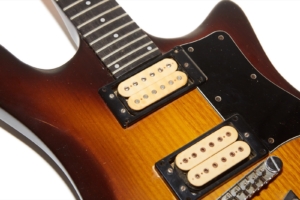
Trademark and color issues aside, these pickups were damn near the most desirable upgrade you could get for an electric guitar in 1980, which is why this model was kind of a big deal. Hell, those bare coils just looked so freaking modern back then in a world where every pickup was covered from the factory, and I’ll admit to being drawn to the S300AD originally because it looked so different from every other Strat and Les Paul out there.
I will say that on my original S300AD, the bridge pickup developed a hellacious scream at volume which occurred after abusing it for probably 10 years straight. A quick wax potting fixed it right up, but I’ll confess to not knowing what sorcery my guitar shop (again, Mike’s Music in Stirling, NJ) laid upon my only axe at the time.
While the PAF has a nice PAFish medium-wind behavior, generally measuring around 8k Ω, the Super Distortion is a take-no-prisoners monster lead pickup that generally measures around 13k Ω. Indeed, this is a very different guitar than the HB1-equipped S300.
Electronics
The electronics in an S300AD are fairly straightforward and as you can see, completely contained within some serious shielding. The obvious standout difference from the norm is the addition of the phase switch which takes the bridge pickup and reverses the direction of the signal in order to put it in direct opposition to the neck pickup in order to deliver a very nasally sound when both pickups are selected. There are some common discussions online about the usefulness of that tone, but it’s definitely got its uses as I’ll try to point out later on in this article.
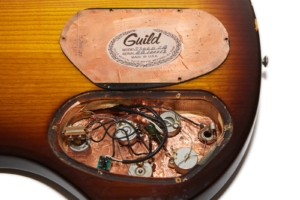
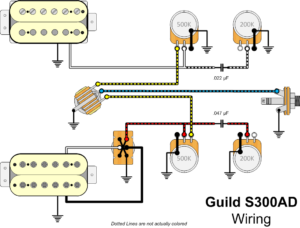
Hardware
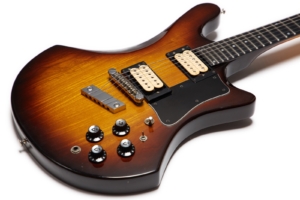
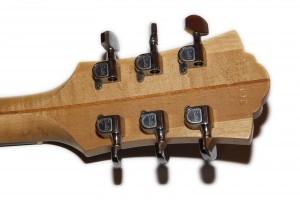
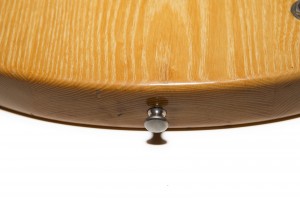
Sigh… now I’m sad again.
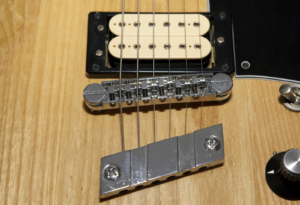
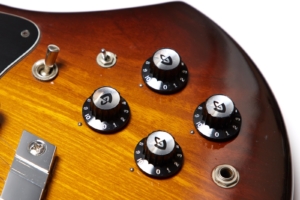
Sound
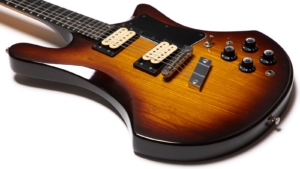
As noted in the pickup section, the bridge pickup is crazy hot and it easily pushed my normally quiet clean amp into distortion. Remember, that was kind of a design goal for the time. Van Halen was a new band, and the hair band thing was just taking off so more power was the order of the day.
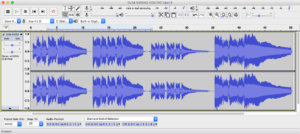
ODS-100
Open Chords #1
Open Chords #2
7th Chords
D-Shape
JCM-800
A Barre Chords
D-Shape
For each recording I cycle through the neck pickup, both pickups, and finally the bridge pickup. All knobs on the guitar are on 10 at all times.
This is an aggressive, snappy, in-your-face kind of guitar that just begs for gain. This guitar was clearly built with the intent of pushing a cranked amp hard. Hell, they didn’t name it the Super Distortion because it was meant for covering Simon and Garfunkle tunes. No, this guitar was made to rock, and holy hell does it ever rock.
The bridge pickup is a high-output monster that pushed my clean amp way harder than I expected. Coupled with the solid ash body, maple neck, and ebony fretboard, this guitar delivers all the upper midrange you could want into that Marshall full-stack in your bedroom. Who needs a treble booster? This guitar with that Super Distortion in the bridge IS the treble booster!
SLO-100
It’s Not Love
1959SLP Treble
Still Blues
Jumped Plexi
Rock You Hurricane
To balance out that bridge pickup, the lower-wind PAF does a great job in the neck, and though it doesn’t kick the amp quite as hard, it does deliver those creamy neck pickup tones that I love, especially when soloing up high on the fretboard. Hence, my Still Got the Blues for You impression played through the default patch of the same name on the AxeFX III which uses a 1959 SLP Treble amp. Even that recording sounds a bit trebly to me and I’d probably roll off the highs a bit with the tone knob on the guitar if playing live. Given the fact that I love bright guitars, the fact that I’d roll off the tone is quite telling, but remember that this guitar has a 250k tone pot where it originally came with a 200k.
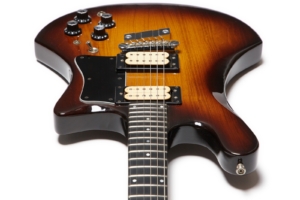
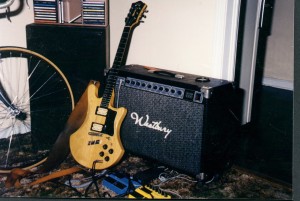
Words cannot describe how much I want that guitar back.
Playability
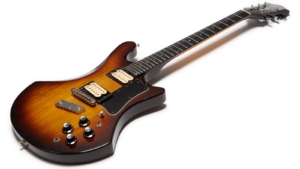
Upper fret access is ridiculously good due to both the body shape and the low-profile set neck. In fact, playing an S300AD for so many years absolutely ruined me for other less-accessible guitars and it took me years before I could play a regular Strat comfortably. The only actual Strat I ever bought was an American Deluxe back in 2008 because they shaved off that heel corner that bugs me so much. Plus it was ash and I’ve clearly got a thing for ash guitars.
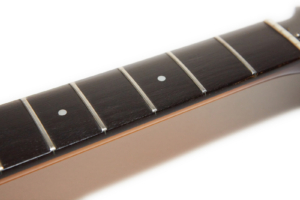
It was the extreme high-fret access coupled with the fact that these are 24-fret guitars that made me fall in love with Jackson Soloists because they solved the neck joint problem even better than Guild did, and the upper fret access is just as good, if not better. Plus, you know, I needed to get my wheedle-wheedle on with a proper Floyd Rose.
Speaking of Floyd Rose, back around 1988 or so I brought my beloved blonde S300AD to a music store in Flemington, NJ after buying a Floyd Rose bridge and told the guy to mill it out and bolt it on. Thankfully, he refused saying, “I will not cut into this beautiful piece of wood.” Thanks Mr. Anonymous music store guy. The world needs more people like you.
Conclusion
I discovered something while making these recordings, or I should say I rediscovered something, and that is that I absolutely freaking love playing these guitars. Sure, I’m biased, but I’m biased because An S300AD was my only guitar for decades, and you know what? For me it functioned perfectly well as an only guitar, though to be fair that’s likely due to my musical tastes.
Is this oddly shaped guitar for everyone? Clearly not, and maybe that’s part of what I was drawn to it in the first place. I’ve never been one to feel the need to fit in, and in a world of Strats and Les Pauls this guitar stood out to me as it hung on the wall of Mike’s Music so many years ago.
Let me put my love for these guitars into perspective. I have owned over 100 different model guitars including ridiculously expensive custom shop models and the S300AD is my favorite over all of them. Sure, I have guitars that are better at Jazz or Rockabilly, guitars that are better at clean tones, and guitars that are more useful for ’80s shred because they have double locking tremolos. Those guitars all inspire me in different ways, but this guitar… this guitar makes me feel like a kid sitting down to learn a song in order to impress a girl.
I asked myself if my love for this model purely nostalgia, and the answer I came up with is no. These are rock solid instruments that perform like crazy. All of the hardware is solid, the build is solid, they sound great and they play great. The people I’ve talked to who don’t like them seem to be put off by their looks which is a shame, but for them the S100 probably fits better. Those didn’t come in ash and they didn’t come with Dimarzio pickups, either, and from 1978-1994 Guild didn’t even have an S100 in the price lists, so back then you had to choose something else, anyway.
I’ve always maintained that these guitars weren’t ridiculously famous because the world never saw Jimmy Page playing one. Sadly that seems to be due to the shape as detailed by the user DrumBob, a former Westerly Guild employee who’s job it was to try and get artists to play them. That’s really too bad because they’re amazing guitars. Then again, lack of any real celebrity endorsement means that I can still buy them for a reasonable price.
If it’s not clear by now, I highly recommend the Guild S300AD. That is, if you can manage to find one that I haven’t already bought.
Good luck with that.
Donate: PayPal Crypto:
ETH: 0x0AC57f8e0A49dc06Ed4f7926d169342ec4FCd461
Doge: DFWpLqMr6QF67t4wRzvTtNd8UDwjGTQBGs

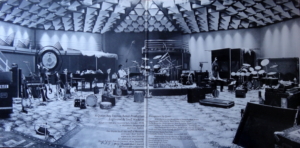
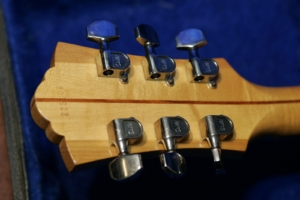
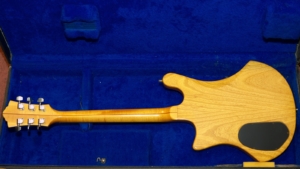
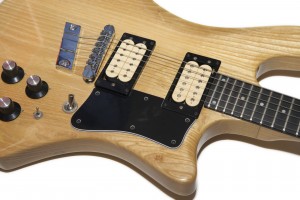

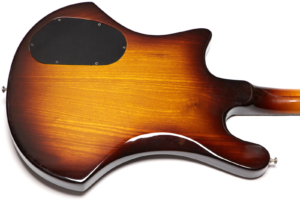
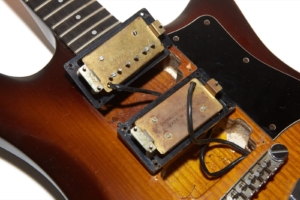
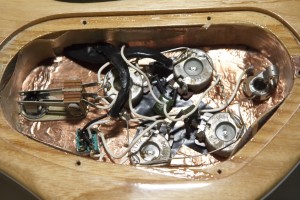
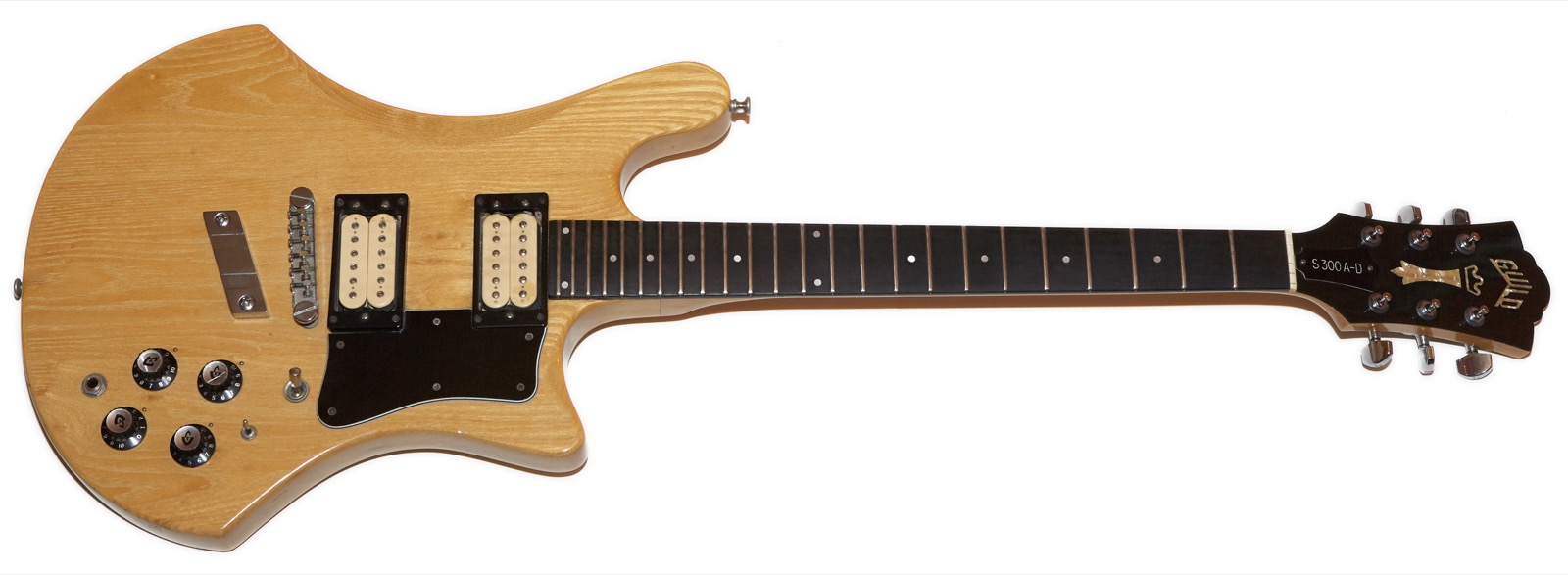
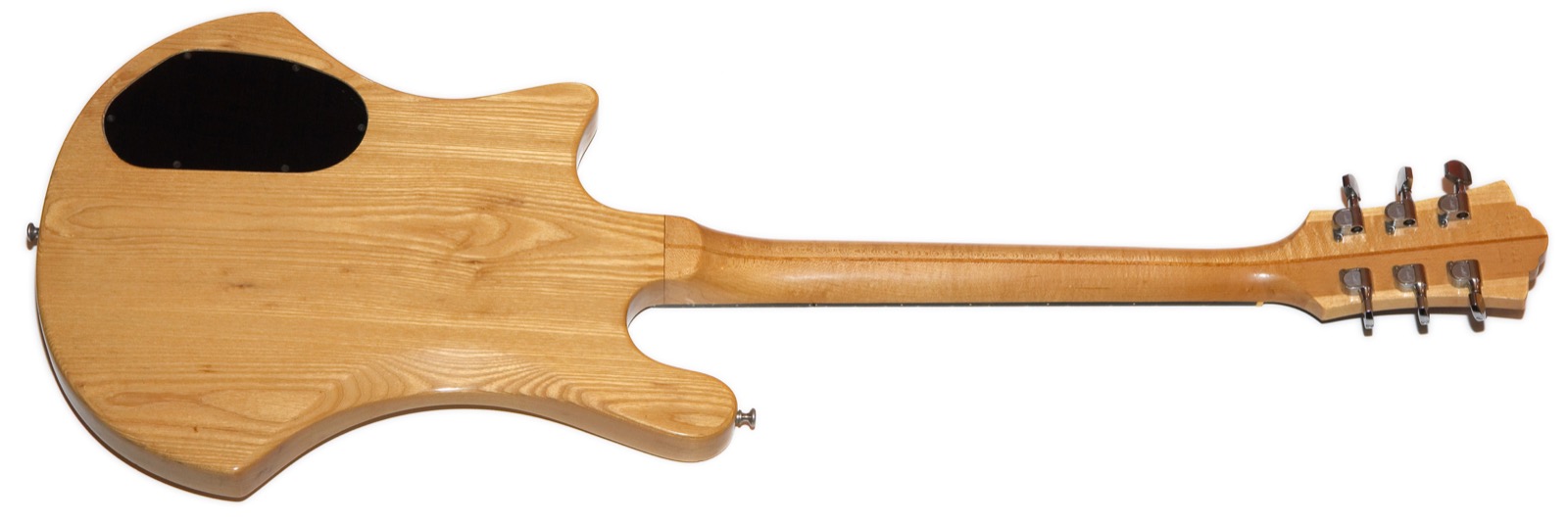
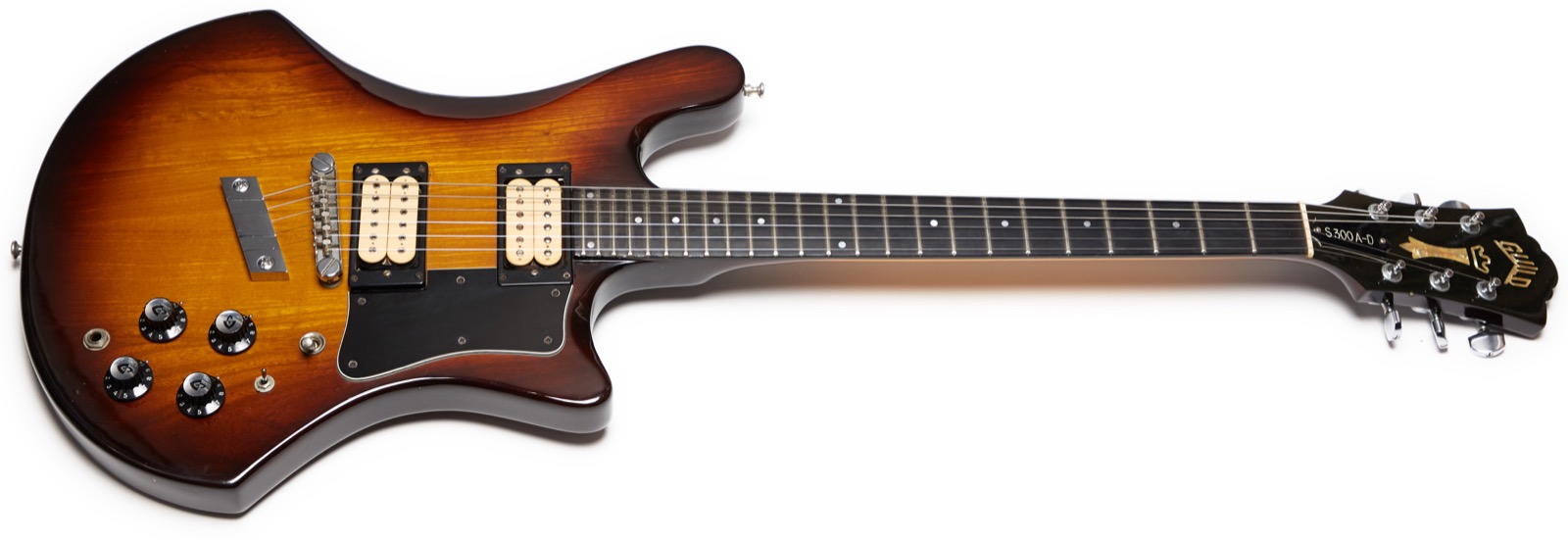
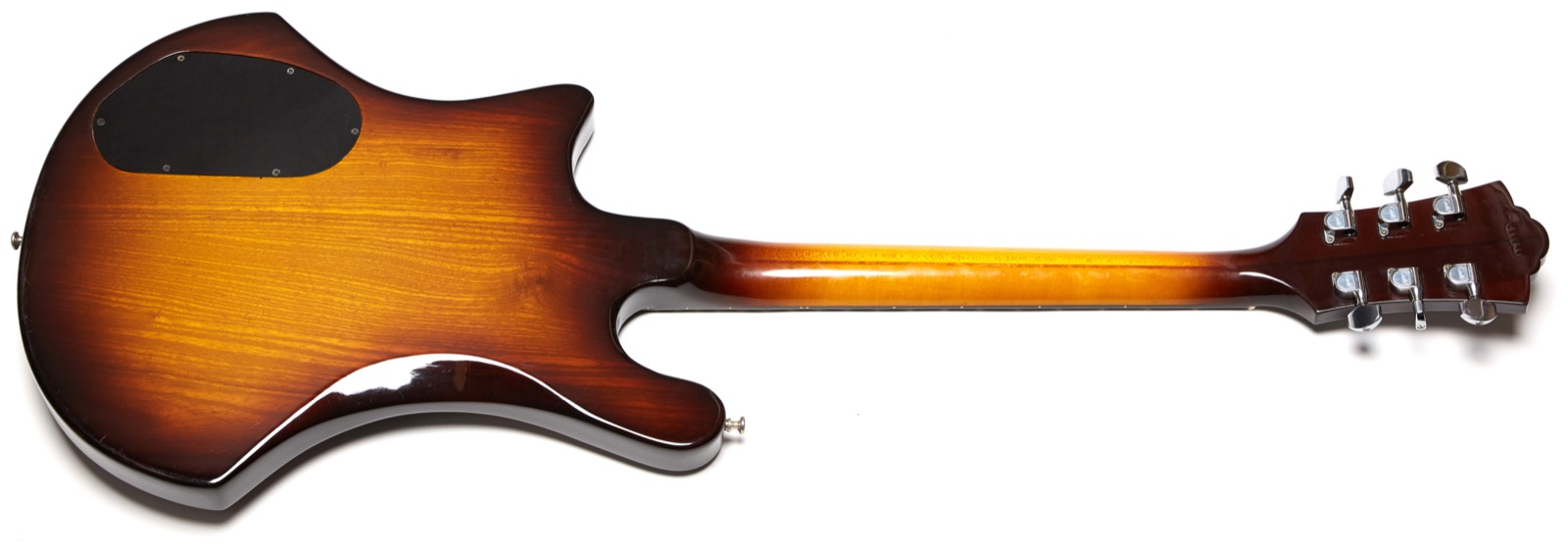
Nice guitar, indeed.
Thank you Gary for this comprehensive study.
Sound samples links seem to fail. Can you update / reload them, please ?
Musically,
— Denis.
I absolutely love my S300AD. It’s been my main guitar for about 20 years now. Serial number 167587. It’s been chucked about and gigged all over the place, including 5 years at Glastonbury, UK and Europe tours, the States. Blond, battered and bad ass!
Hello, just came across your article about the S300AD. Back when I was in high school I bought a Guild S300D, probably around 1977. I really liked that guitar. While in college I was fortunate that my father was paying for it (part of divorce settlement I believe). I felt guilty at the time so sold my beloved S300D to contribute to the cause. A number of years later I began to regret it and still do. I wish I had bought another one at least 10 years ago as the price keeps climbing! On another note, does the S300 Lucie actually exist? Would love to play that!
Hey there. What do you mean by S300 Lucie?
Oops, sorry, bad browser.
With the good one it’s OK 😉
Musically,
— Denis.
Do you, by any chance, have a PDF of the user manual for this guitar? Or know where one might be obtained?
Thanks,
Michael
I do not. If memory serves they’re generic and not guitar-specific if that helps any. If you hunt around on Ebay you’ll likely find one. They look like this: https://www.gad.net/Blog/wp-content/uploads/2020/07/image.png
Ran across this (and the Gretsch-Talk article) when I searched for more info on my Hoyer 50603.
Multiple people told me before, that my Hoyer was a copy of the Guild S300… it’s CRAZY to find out it was the other way around, and the Hoyer was first and inspired the Guild!!
I bought mine used in Germany, with all hardware missing, but still paid $800 at the time, because I fell in love at first sight. Couldn’t find the original bridge so I had a Tune-o-matic installed.
When I first heard it “dry”, I was so amazed with the sound, that I hunted for a pickup that can translate that to an amp, and that was an Ultrasonic humbucker.
Still one of my favorite guitars, if not THE favorite (I go back and forth).
It’s really uplifting to read, that it inspired such a classic as the Guild S300! Now I think that I should look for a “copy” as well and try it 😉
Great article – thanks for the shoutout to the Hoyer 50603!
Hi GAD, thanks for the interesting and useful article on Guilds. I have a 1977/8 Guild S300 A-D which I came across by accident about 30 years ago when I went into a college music room and saw it leaning against a radiator! (It’s not yours by the way, model no: 194754). I offered them a brand new Squier Strat in exchange and we were all happy. It needed new tuners and i’ve replaced the bridge with a Bigsby tremolo, during which I found a thin silver wire protruding through a hole in the body and held in place by the bridge plate, and it’s now under the Bigsby plate. I assume that this is some sort of earth or grounding wire coming from the electronics but as the screws in the cover are very firmly in place, I haven’t been able to check. I wonder if you could confirm or advise me otherwise?
Thanks again for the article.
Regards, Alan Jones, Wales, UK.
Nice score! Also thanks for checking to see if it was mine!
You are correct: that wire is what connects the tailpiece, and thus the strings, to ground thereby keeping the whole thing from buzzing while you touch it.
hola´
me entretenido mucho leyendo todo el articulo, yo tengo una s300d del 79 y otra del 80 walnut y estoy enamorado de ellas, son guitarras espectaculares y si encuentro otra tambien hare lo posible por conseguirla!
vivan las guild!!!!!!!!
Very cool to read about your love for the same guitar I’ve owned for close to 40 years now. When I got mine back in ’81 or ’82 I didn’t realize it wasn’t all original and also had some issues. Someone had replaced the bridge and tailpiece with a tune-o-matic style bridge. And they did a hack job on it. The bridge was straight up and down, not angled slightly like it’s supposed to be. So it could not be properly intonated. Being dumb kids, we could never figure out why, no matter how many times we tuned up, that something always sounded wrong, hahaha.
I tried to get a machinist friend to help me out with fixing it about 15 or 20 years ago. He was afraid to mess it up. Not me! I ended up using a drill and relocating one of the bridge mounting posts. I’m lucky I didn’t mess it up even worse. I tweaked the intonation and was finally able to hear what this guitar was really capable of. Frets are showing serious wear these days, but so far doesn’t seem to present an issue.
hey there gary! i own a pretty beat up & refinished s-300ad bought used and it came strung with .09-.42 strings in e-standard. i was told this is how the guitar came strung up nrand new back in the day and am looking to verify this. i find this much too light of a guage for a short scale guitar but am hesitant to go up to my normal .10-.46 since this guitar is +40 yrs vintage. do you know of back in the day if these came stock with .09s or .10s? also how do you like to string yours? 🙂
In the ’80s I only used .09s, but around 1995 or so I switched to .10s on all of my 24 3/4″ scale guitars including the S300s. That means I’ve been running .10s on multiple S300s for decades with zero issues.
According to the catalog, S300s came with E220 Sidebender strings, which were .009-.042
1978 Catalog
1978 String Catalog
Fantastic article Gary, very informative. I’ve been searching for a decent S300A-D for awhile now in New Jersey area . Any chance you know of one for sale ? or looking to sell one of yours ? Really like your Guild collection
Thanks for the info. I’m a proud owner of one (S300AD) and felt un love with the one my teacher had(S300). Both of them in Barcelona. I thought there were build from 79 to 83 and by the SN, only near 500 were build.
Hi Gary. Great article.
I have an S300D that I bought s/h here in the uk back in late 1979, so it was almost new then. Now it is somewhat beaten up and in dire need of a refret, but has always been my #1 guitar.
Agree with pretty much everything you say about these instruments. It’s a supremely comfortable guitar to play (esp seated, when every other guitar digs in somewhere…), I think it looks fantastic and it really rocks. I also appreciate the lighter weight these days. Like you I was initially drawn to it as much by what it wasn’t (a strat or a LP) as anything else – but as soon as I picked it up and played it I knew it was “the one”.
I don’t know how many were sold in the uk but it is extremely uncommon here.
I’ve always said that it’s the one thing I’d have to rescue if the house was on fire and I feel your pain over your long lost blonde soulmate.
I have a S300D Guild Black, and I am looking for the wiring details or schematics.
If you know ?
Thank you by advance !
JLBe
It would be identical the the wiring shown on this page since it’s the same guitar, just with different wood (mahogany vs. ash)
Gary, your blog was referred to me by my cousin who also plays and is a big fan of Guild. When I was a teenager, my mother bought me one as my first quality guitar (S300D) after having played several import models. Long story short, she passed away unexpectedly just after that, and I was forced to sell it, as I was putting myself through school and needed the money, and felt she would have preferred I have my engineering degree. I’ve kept my eye out for one, but just never seemed to find anything in Excellent condition. Hoping one day to finally find one. Thanks for a great article.
Thank you for your very thorough article about this guitar. I have had a blonde S300AD since the mid ’80es and worn one set of frets out. I still love to play it.
Thank you for the comprehensive article Gary, as an owner of an S300A-D (purchased in 1979) I sincerely sympathize for your loss and I hope you cross paths with it soon.
I hope ash burns well because I will be cremated with mine.
Best
Chris H